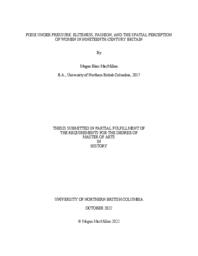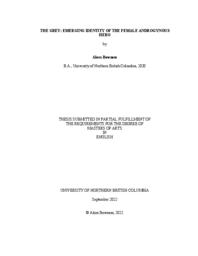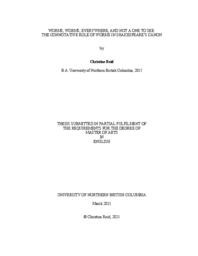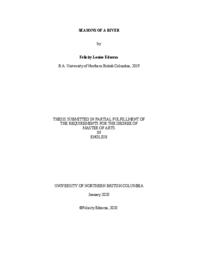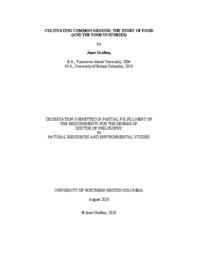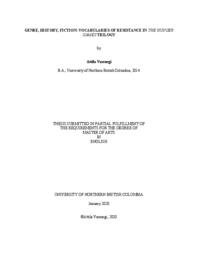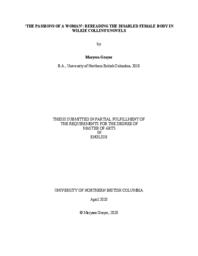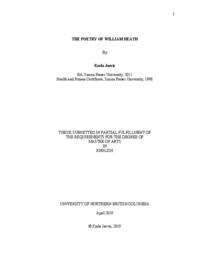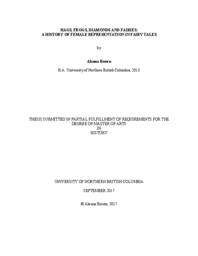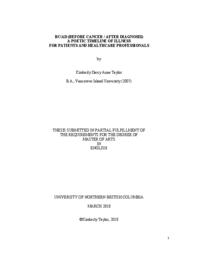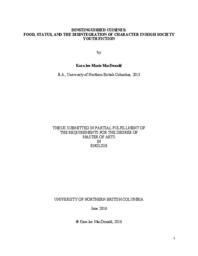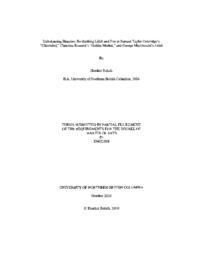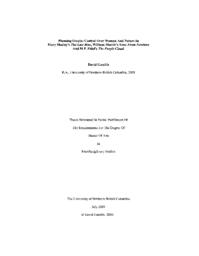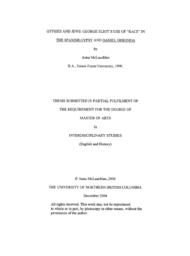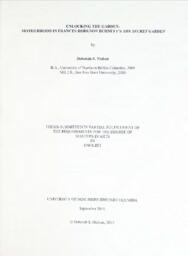Guest, Kristen
Person Preferred Name
Kristen Guest
Related Works
Content type
Digital Document
Origin Information
Content type
Digital Document
Description / Synopsis
Every summer thousands of Britain’s elite upper class travelled to London’s West End to socialize and participate in the Season. During this time, elite women donned luxurious court gowns and went to St. James Palace to present themselves before Queen Victoria in Drawing Room ceremonies. One of these gowns, from 1863, survives today and offers an evocative glimpse of how elite women styled themselves for one of the most important ceremonies in their life. But, the West End was not just an elite neighbourhood. It also housed and employed middle and working-class Victorians with whom the elite did not always happily coexist. In 1861, peer and M.P. Sir Shelley allegedly flashed the public and his middle-class neighbours while a carriage procession for one of the Queen’s Drawing Room ceremonies passed below. The Times reported his trial, which featured contemptuous cross-examinations of several working-class women, and Sir Shelley’s triumphant victory. Two years later, several elite men submitted letters to the editor of The Times, complaining about the cramped and sometimes combative atmosphere of royal ceremonies, suggesting that they were not safe for women to attend. There is a gendered conflict in these sources. Those from elite feminine perspectives show the value in attending royal ceremonies, during which women could use their fashion and occupation of space to reinforce or manipulate their social status. The documents written from men’s points of view, however, show an attempted renegotiation of elite status by excluding the middle class and further limiting women’s access to elite spaces. My research questions where this conflict originated and how historians can utilize less traditional sources to bring feminine perspectives into areas of history in which male points of view have often dominated.
Origin Information
Content type
Digital Document
Description / Synopsis
Theorists who study the formulation of the hero have identified that the appearance of the hero varies depending on the time and place they are needed. Yet, the function of hero archetypes, such as Joseph Campbell’s monomyth, have reinforced traditional Caucasian masculine male mythic ideologies in young-adult fiction. Reconfiguring the idea of the hero to question its masculine bias and include a female androgynous heroic paradigm will expand the limited classification of “hero” as the hero is encouraged to hone both her masculinity and femininity. This project focuses on a hero with both an androgynous personality and an Indigenous heritage. These aspects of my project push back against the gender and cultural norms often associated with heroic journeys in Western culture. Throughout this thesis, I formulate a more accepting form of identity by mapping an encompassing version of the hero’s journey that pushes the boundaries of classic “heroism” but still utilizes the familiar and effective pattern of the heroic journey of the self by comfortably living in the what I am titling “grey space”. By illustrating the fluidity of identity, young readers can relate to a heroic character who encompasses more than the traditional role outlined by Campbell.
Origin Information
Content type
Digital Document
Description / Synopsis
This thesis examines the enthusiasm and motivations for home canning in the twenty-first century within the context of the DIY movement of the 1990s and the current urban homesteading movement. Using interdisciplinary methodological approaches, including feminist history, feminist auto/biography, and autoethnography, the author provides historical background on home canning and homesteading in Canada and the United States; she also uses her own lived experiences of canning and gardening while pursing an MA in Gender Studies to analyze choice feminism. This thesis examines criticisms of the current interest in home canning by journalists, and the reactions of canning/urban homesteading bloggers to those articles. Ultimately this thesis argues that canning is a valuable skill and that feminism and foodwork are not incompatible; furthermore, blogging about canning and urban homesteading is breaking down the divide between the public and private spheres by providing an income for some bloggers through advertising and book deals.
Origin Information
Content type
Digital Document
Description / Synopsis
Exploring the experiences of people who build a casket for a loved one is not clearly delineated in academic literature. This study focused on identifying and sharing the experiences of people who engaged in casket building for a loved one. The purpose of the research was to explore and interpret people’s experiences with casket building. Using an interpretive description approach and thematic data analysis, my research encompassed the experiences of four people who engaged in casket building for a loved one. Ultimately, four themes were generated: 1) A Desire for Something Different, 2) Influential Death Rituals, 3) The Importance of Relationships, and 4) Maintaining Wellness. The research supports those who may choose to follow in their footsteps. The study also encourages social workers to utilize practices, which some may consider non-traditional, to best meet the needs of the populations they serve.
Origin Information
Content type
Digital Document
Description / Synopsis
The study of animals in Shakespeare’s collected works has expanded over the last 30 years. While a number of different animals have been discussed, the importance of the worm in the larger scope of the canon has largely been ignored. By focusing on the perception and presentation of worms in relation to cultural ideas of death, corruption, and consumption, ideas surrounding the body and soul are brought to the forefront. Worms are integral to our understanding of the Early Modern cultural constructs of the body and soul as the presence of worms reveals the state of the individual or the broader environment. Overall, the depiction of worms in Shakespeare’s works serves as a way to understand the metaphysical processes surrounding death and corruption.
Origin Information
Content type
Digital Document
Description / Synopsis
Seasons of a River is a fictional story about a woman looking back on her life. In her recollections she has to acknowledge and come to terms with the fact that her relationships with indigenous people in Canada have been inequitable and unbalanced. She realizes that she has been in the role of helper, of ally, and as such has perpetuated ideas of colonization and oppression, despite her good intentions. The protagonist, Annan, is in the process of trying to understand the complicated issues involved with the helping industry and her part within that industry. My introduction discusses the power differentials within allyship relations. I discuss how liberalism, at the root of the helping industry, although seen as a positive ideology, often perpetuates inequities and injustices when dealing with groups that are seen as “different.” I also discuss the importance of relationship building and listening and the need for quelling the tendency to assist others without consultation. This introduction and story also contain themes of ageism and how these attitudes are woven into the fabric of society in such a way as to internalize oppression and the idea of staying in one’s “place.” Ultimately, this story is about transformation.
Origin Information
Content type
Digital Document
Description / Synopsis
Demystifying the story of food – from seed to store to stomach and how that cycle perpetuates – is a core tenet of food literacy and the central aim of this project. While exposure to environmental issues is critical to developing awareness, young learners are often burdened with crisis-laden facts about the state of our world and our food systems. Approaching difficult subjects using a narrative approach is one way to mitigate this burden. In this project, children’s literature that centres on farms and food production/food gathering in settler and Indigenous contexts is used as a launching pad for discussions about food security. Food is an enduring theme in children’s and young adult literature, and is particularly prevalent in narratives from the past, where food gathering and production are often rooted in their environmental contexts. These food narratives provide a pathway for young readers to critically investigate contemporary environmental concerns from a safe space. This project investigates how children’s literature can be used as part of a critical food pedagogy to enhance the food literacy of young learners and encourage them to find common ground between the physical world and the worlds they read. In locating, analyzing, and experiencing food environments in literature via an affective, indirect approach, food literacy - which is foundational to the development of environmentally responsible behaviour – is enhanced.
Origin Information
Content type
Digital Document
Description / Synopsis
This thesis examines Suzanne Collins‘ use of “arena fiction” conventions and historical social reform movements in The Hunger Games trilogy (THG) to encourage reflection on the means of subverting the intended effects of spectacle, but also to consider the cost of consuming or using children in social reform. My thesis argues that THG is an arena story which explores the mechanics of social reform through powerful visuals while also exploring the personal cost, especially on children, of becoming a visual symbol of resistance. I show how THG is rooted in historical social reforms and why these are so useful for Collins to generate visual resistance literacy in her readers and push her use of arena fiction deeper into exploring child bodies. Finally, through a close reading of the subversions in THG, I argue that Collins uses both arena fiction and history to further reflection on children‘s participation in reform movements.
Origin Information
Content type
Digital Document
Description / Synopsis
This thesis explores how Wilkie Collins’s portrayal of disabled female bodies disrupts the Victorian opposition between ‘normal’ and ‘abnormal’ bodies, and, in doing so, offers an alternative to the prevailing contemporary ideal of femininity, as passive, pure, and spiritualized. In Hide and Seek (1861), The Moonstone (1868), and Poor Miss Finch (1872), I argue Collins reconfigures traditional readings of both disabled and able-bodied women. Drawing on theories in disability and gender studies, my thesis examines how prevalent understandings of the disabled body offer insight into how we think about the human body in general, and how in Collins’s novels the disabled body is used to question gendered norms placed upon all members of society.
Origin Information
Content type
Digital Document
Description / Synopsis
This thesis examines three Gothic novels: The Romance of the Forest and The Mysteries of Udolpho by Ann Radcliffe and Northanger Abbey by Jane Austen. In these three novels, the female heroines of each struggle against the patriarchal power structures of eighteenth-century society. Immersion in a natural environment strengthens these female Gothic heroines, aiding them to resist the will of male characters and to establish agency. Gothic nature is an ally to women, while Gothic urban settings act as a domain of oppression for both women and nature. The authors Ann Radcliffe and Jane Austen wrote active heroines who in turn influenced female readers. These novels and their heroines were an active influence on feminist thought and ideas in eighteenth century England.
Origin Information
Content type
Digital Document
Origin Information
Content type
Digital Document
Origin Information
Content type
Digital Document
Origin Information
Content type
Digital Document
Origin Information
Content type
Digital Document
Origin Information
Content type
Digital Document
Origin Information
Content type
Digital Document
Origin Information
Content type
Digital Document
Origin Information
Content type
Digital Document
Origin Information


